I’m excited to explore the world of operating systems with you. We’ll look at the main differences between Linux and Unix. Both have greatly influenced how we use computers today. Yet, their beginnings, growth, and features are quite different.
Key Takeaways
- Linux was created in 1991 by Linus Torvalds, while Unix was developed in the 1970s at Bell Labs.
- Linux is free and open-source, while Unix is proprietary and closed-source.
- Linux has a diverse, global community of developers, while Unix development is more centralized.
- Linux is widely used in enterprise and personal computing, while Unix is more prevalent in enterprise-level servers and workstations.
- Both Linux and Unix have unique strengths and are suitable for different purposes, depending on user needs and preferences.
What is Linux?
Linux is an open-source operating system created by Linus Torvalds in the early 1990s. It’s a free alternative to Unix, focusing on community development and hardware compatibility. The name “Linux” comes from the Linux kernel, the heart of the system.
Origins and Development
The story of Linux starts in the late 1960s with MULTICS, a project by MIT, AT&T Bell Labs, and General Electric. It failed, leading to Unix’s creation by Ken Thompson in 1970. In 1991, Linus Torvalds released the first Linux kernel for Intel x86 PCs, using GNU utilities and libraries.
Since then, Linux has grown fast, thanks to a dedicated community. It’s now used in many fields, from servers to smartphones and IoT devices. Its open-source and community-driven nature have been key to its success, enabling constant innovation and adaptation.
“Linux is not just an operating system; it’s an entire ecosystem of software, tools, and community support that has transformed the way we think about computing.”
| Characteristic | Linux | Unix |
|---|---|---|
| Licensing | Open-source, free to use and modify | Proprietary, requires licensing |
| Kernel | Monolithic kernel with loadable modules | Larger and more complex kernel |
| Community | Large and active community of developers and users | Smaller and more focused on enterprise-level users |
| Hardware Support | Supports a wide range of hardware, including Intel x86, ARM, and more | Primarily available on enterprise-level hardware like RISC and Itanium machines |
| Security | Responsive bug-fixing process due to open-source nature | Longer waiting time for bug-fixes |
What is Unix?
Unix is a special operating system made in the 1970s at Bell Labs. Ken Thompson, Dennis Ritchie, and others created it. It’s known for being multi-tasking and multi-user, making it great for big servers and companies.
Unix was first made by AT&T’s Bell Labs. It’s different from Linux, which came out in the 1990s. Linux is free and open-source, while Unix is not.
Unix is not open to the public like Linux is. Its source code is not shared. Linux, on the other hand, lets anyone see and work on its code.
| Feature | Unix | Linux |
|---|---|---|
| Licensing | Proprietary | Open-source |
| Source Code Accessibility | Not publicly available | Freely accessible |
| Development Model | Primarily by AT&T and its licensees | Global community-driven |
| Hardware Support | More rigid hardware requirements | Highly scalable and supports a wide range of hardware |
| Use Cases | Enterprise-level servers and high-end computers | Servers, desktops, mobile devices, and a wide range of applications |
In short, Unix is a special operating system from the 1970s. It’s used in big companies and servers. But, it’s not open like Linux, which is made by a community.
Licensing and Source Code
Linux and Unix differ mainly in licensing and source code access. Linux is open-source, allowing anyone to see, change, and share its code. Unix, however, is proprietary, with its code not available to the public. Users must pay for a license to use Unix, while Linux is free.
Open-Source Linux
Linus Torvalds started Linux in the 1990s. It has become a strong, community-driven OS. Thanks to its open-source nature, developers worldwide can improve it. This has created a large community with many distributions and tools.
Proprietary Unix
Unix was first made by AT&T’s Bell Labs in the 1960s. Over time, companies like HP, IBM, and Sun made their own Unix versions. These versions have their own licenses and restricted source code. This has led to a smaller user base, mainly in enterprise and specialized areas.
| Feature | Linux | Unix |
|---|---|---|
| Licensing | Open-source, free to use | Proprietary, requires a license |
| Source Code Access | Freely accessible | Not publicly accessible |
| Community | Large, active, and collaborative | Smaller, focused on enterprise computing |
In summary, Linux’s open-source nature and Unix’s proprietary model have shaped their paths. These differences have influenced their adoption and evolution.

The Difference Between Linux and Unix: Explained
Linux and Unix share a common root but differ in many ways. Unix, a multi-user system, has been key in computing for decades. It includes Solaris, AIX, and HP-UX. Linux, started in the 1990s by Linus Torvalds, is open-source and used on many devices.
One big difference is in licensing and code access. Unix is copyrighted, while Linux’s code is open and free. This means Linux can be used and changed freely, for personal or business use.
| Feature | Linux | Unix |
|---|---|---|
| Licensing | Open-source under various licenses (GPL, MIT, etc.) | Proprietary, with commercial variants owned by vendors |
| Kernel | Linux kernel, developed by the open-source community | Proprietary kernels developed by commercial vendors |
| Hardware Compatibility | Supports a wide range of hardware, including commodity x86 and ARM-based systems | Primarily designed for high-end, enterprise-grade hardware |
| Use Cases | Suitable for personal computing, web hosting, and enterprise applications | Preferred for mission-critical, high-performance applications in large enterprises, research, and academia |
Linux’s open-source nature makes it very adaptable. It’s used by big companies like Google and Amazon. It’s also popular for personal use, thanks to easy-to-use distributions like Ubuntu.
Unix, however, is best for critical tasks in big companies and schools. It’s known for its reliability and performance. It’s great for servers and workstations in professional settings.
The debate between Unix and Linux focuses on their unique qualities. It’s about what each operating system is best for in the computing world.
Kernels and Architecture
Linux and Unix operating systems have a similar base. They both use a monolithic kernel design. Yet, their kernels differ in complexity and architecture.
The Linux kernel was created by Linus Torvalds in 1991. It’s simpler and more flexible than the Unix kernel. This makes Linux great for cloud computing and servers.
The Unix kernel was made for specific hardware, like PA-RISC and Itanium. It’s known for being scalable, secure, and robust. This makes it ideal for big business applications.
Both Linux and Unix have special features. Linux has the Kernel Virtual Machine (KVM) and Extended Berkeley Packet Filter (eBPF). Unix is famous for its stability and handling big workloads well.
Some call it “GNU/Linux” to honor the GNU project’s role in Linux. This term highlights the mix of Linux kernel and other software for a full operating system.
| Feature | Linux Kernel | Unix Kernel |
|---|---|---|
| Complexity | Less complex and more streamlined | Generally more complex |
| Hardware Compatibility | Designed for a wider range of hardware | Originally developed for specific hardware architectures |
| Unique Features | KVM, eBPF | Stability, Scalability, High Workload Handling |
| Kernel Naming | Linux | Unix |
In summary, Linux and Unix have a similar kernel design but differ in complexity and features. Knowing these differences helps choose the right operating system for various needs.
Community Support
The Linux operating system has become very popular thanks to its strong community support. It’s different from Unix because Linux is open-source. This means many developers and fans help make it better.
Unix systems are mainly kept up by companies that own them. But Linux is improved by a community effort. This way, Linux can change fast because anyone can help.
The Linux community is always active. People share tips, solve problems, and suggest new features. This helps Linux meet the needs of everyone who uses it.
Unix systems, on the other hand, don’t change as quickly. This is because they are controlled by companies. Users can’t always help shape the system.
| Aspect | Linux | Unix |
|---|---|---|
| Development Model | Open-source, community-driven | Closed, vendor-controlled |
| Cost | Generally free to download and use | Significant licensing fees for initial purchase and ongoing support |
| Customization | Highly customizable, users can access and modify source code | More limited customization options, restricted access to source code |
| Innovation Pace | Rapid, driven by community contributions | Slower, reliant on vendor-controlled development |
| User Influence | Users can actively participate in the development process | Limited user influence, changes primarily driven by commercial vendors |
Linux’s open-source nature and strong community have made it very popular. This is different from Unix, which is more closed. These differences show why Linux and Unix are both important in the world of operating systems.
Hardware Compatibility
Linux is known for its wide compatibility with different CPUs, like x86 and ARM. This makes it stand out from Unix, which is more limited to specific platforms like PA-RISC and Itanium.
Linux started in 1991 with Linus Torvalds, a Finnish student. Unix, on the other hand, began in the late 1960s at AT&T’s Bell Labs. It was first written in assembly language but later in C, making it more portable.
| Hardware Compatibility | Linux | Unix |
|---|---|---|
| CPU Architectures | Supports x86 and ARM | More limited, such as PA-RISC and Itanium |
| Development Timeline | Originated in 1991 by Linus Torvalds | Developed in the late 1960s at AT&T Bell Labs |
| Programming Language | Developed using C programming language | Initially written in assembly language, later rewritten in C |
Linux’s wide compatibility shows its adaptability and the open-source community’s work. This flexibility has made Linux popular in many areas, from desktops to servers and embedded systems.
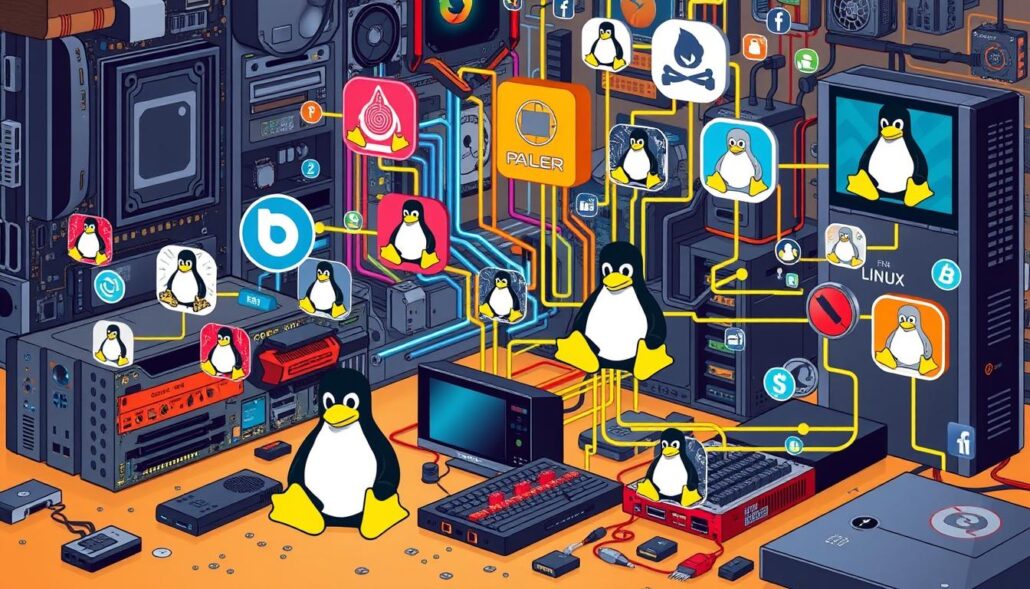
“Linux offers excellent hardware compatibility, supporting a wide range of CPUs and architectures, which is a key factor in its widespread adoption across various computing environments.”
File Systems
Choosing between Linux and Unix often depends on their file systems. Linux supports many file systems like Ext2, Ext3, Ext4, JFS, ReiserFS, and XFS. Unix, however, has a smaller set, including ZFS, JFS, HFS, and UFS, based on the variant.
Linux’s wide range of file systems lets users meet their storage needs. For example, Ext4 is widely used for its performance and support for large files. ZFS in Unix is known for its data integrity and efficient storage.
Linux and Unix file systems differ in architecture. Unix follows the “Unix philosophy” of simplicity and modularity. Linux, however, offers more features for modern computing needs.
| File System | Linux | Unix |
|---|---|---|
| Ext2, Ext3, Ext4 | Supported | Not Supported |
| ZFS | Supported (through third-party software) | Supported |
| JFS | Supported | Supported |
| HFS | Not Supported | Supported (on specific Unix variants) |
| UFS | Not Supported | Supported (on specific Unix variants) |
The choice between Linux and Unix file systems depends on user or organization needs. Linux offers flexibility and customization. Unix provides a streamlined and stable environment for some use cases.
Both Linux and Unix have robust file systems. They help users manage their data well and efficiently.
Graphical User Interfaces (GUIs)
Linux and Unix have different approaches to graphical user interfaces (GUIs). Unix has always leaned towards the command line. But Linux offers many GUI options for users to pick from.
Linux users can try out various desktop environments. KDE and Gnome are popular, along with LXDE and Xfce. These interfaces make computing easier with windows, icons, and menus.
Unix, on the other hand, started with the command line. Later, GUIs like Common Desktop Environment (CDE) were introduced. Now, systems like Solaris and AIX also have GUIs for more users.
“Linux is a modular operating system that allows users to choose various components to build their desktop environment.”
Linux’s flexibility in GUI options is a big plus. It lets users tailor their experience to their liking. This customization is less common in Unix, which tends to be more standard.
The choice between Linux and Unix’s GUIs depends on what you need. Both have their strengths and cater to different users. It’s an exciting time to explore the many GUI options available.
Use Cases
Linux and Unix have their own places in the world of operating systems. Unix is often used for big servers and workstations in companies. Linux, on the other hand, is good for both big companies and personal computers.
Enterprise Computing
Unix is great for big companies because it’s stable, secure, and fast. It’s used for important servers and for special tasks in science and engineering. This makes Unix a top choice for critical tasks.
Linux is also popular in big companies, especially for servers that handle lots of data. It’s open-source and has a big community, which makes it cost-effective and customizable.
Personal Computing
Linux is more common in personal computers than Unix. There are many Linux versions for different users. This makes Linux a good choice for people who like to tinker with their computers.
Linux works on many devices, from desktops to phones. It’s great for everyday tasks and for more complex things like coding and making videos. Linux fans like it because it’s flexible and can be changed a lot.
| Feature | Linux | Unix |
|---|---|---|
| Primary Use Cases | Personal computing, server hosting, cloud infrastructure | Enterprise servers, workstations, high-performance computing |
| Licensing | Open-source, free to use and distribute | Proprietary, requires licensing for commercial use |
| Community | Robust and active, with a large ecosystem of developers and users | Smaller, typically focused on enterprise-level users and vendors |
| Customization | Highly customizable, with a wide range of distributions and desktop environments | Generally less customizable, with a focus on enterprise-specific configurations |
In summary, Unix is still big in the business world, but Linux is growing in both business and personal use. They each have their own strengths and fit different needs well.
Conclusion
The debate between Linux and Unix depends on what you need. Linux is open-source, has a big community, and works well with many devices. It’s great for both work and personal use.
Unix is best for high-end servers and workstations. Its proprietary nature and focus on business make it a top choice for these areas.
Both Linux and Unix are strong operating systems with their own strengths and weaknesses. Knowing the differences helps you choose the right one for you. Whether you pick Linux or Unix, you’ll get a reliable system for your computing needs.
The battle between Linux and Unix will keep shaping the tech world. By keeping up and being flexible, you can get the most out of these systems. This will help drive innovation in the future.

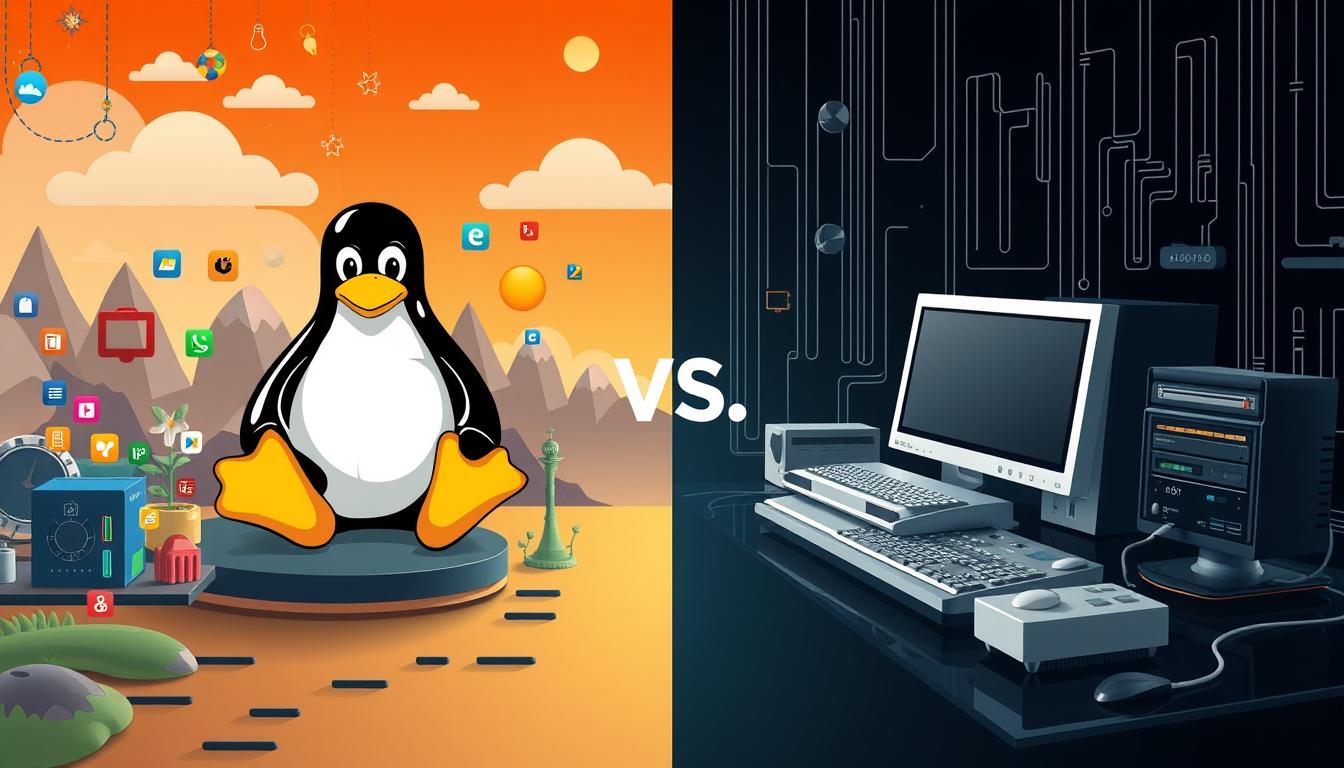


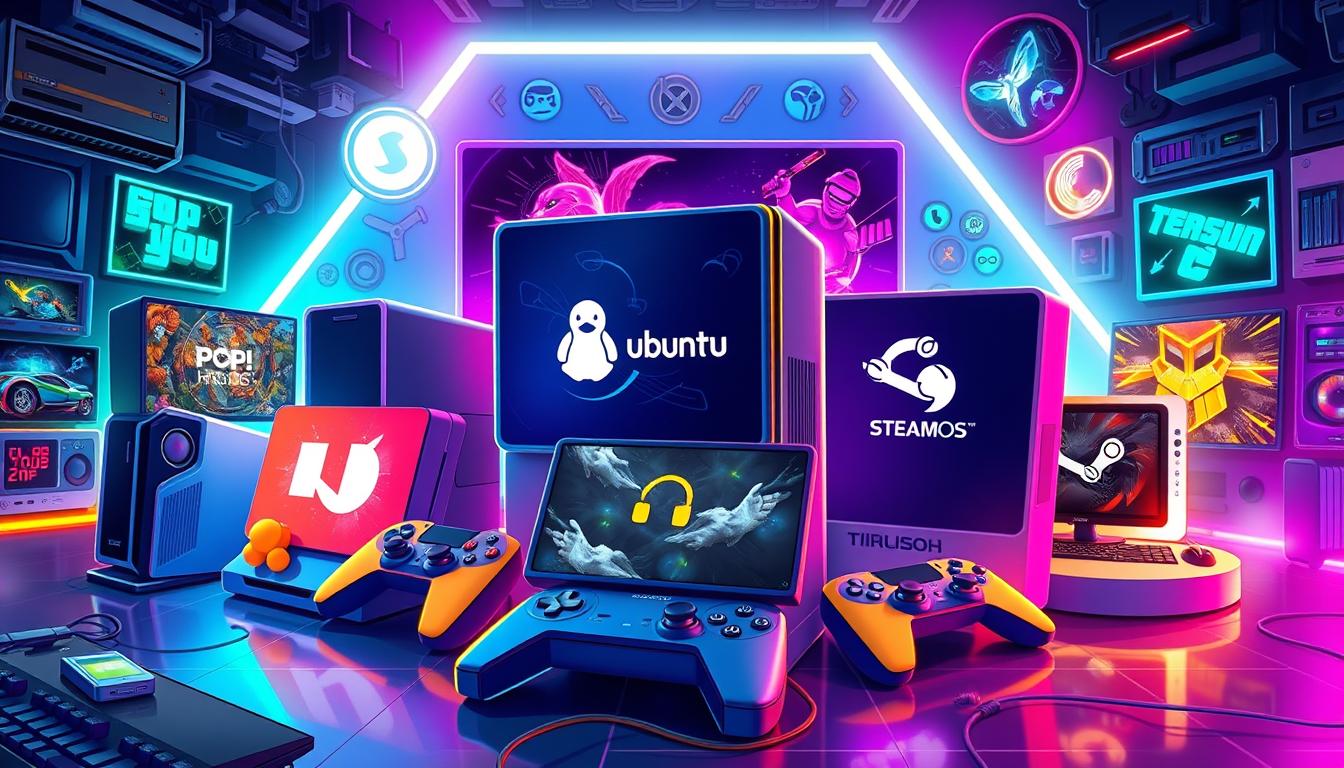
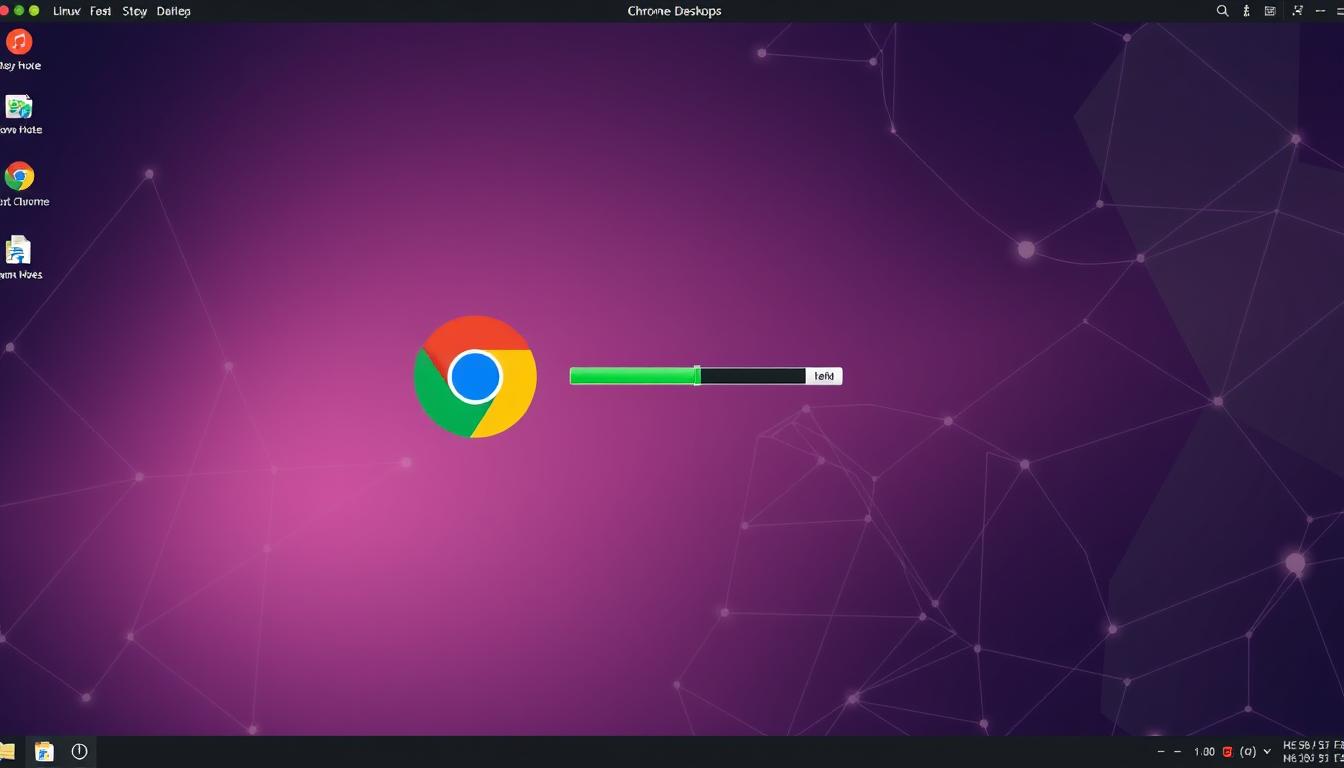
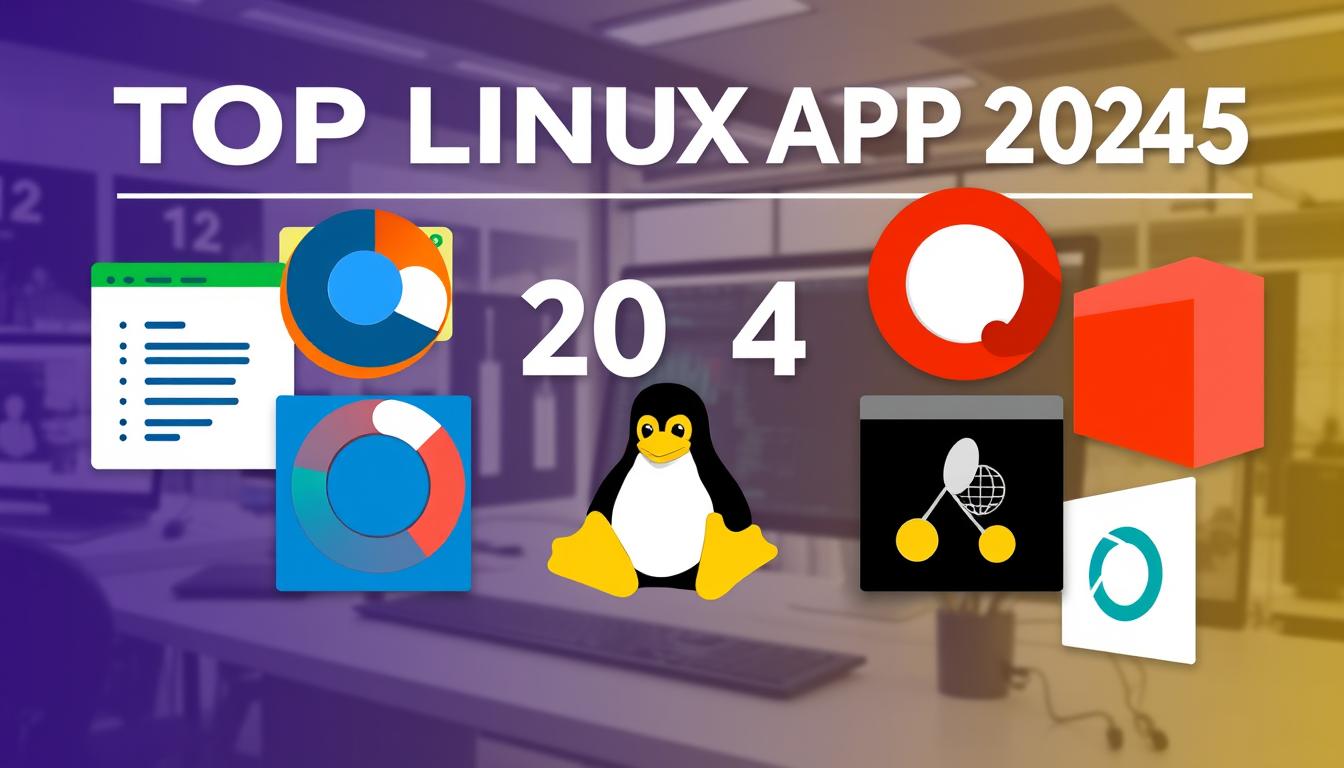
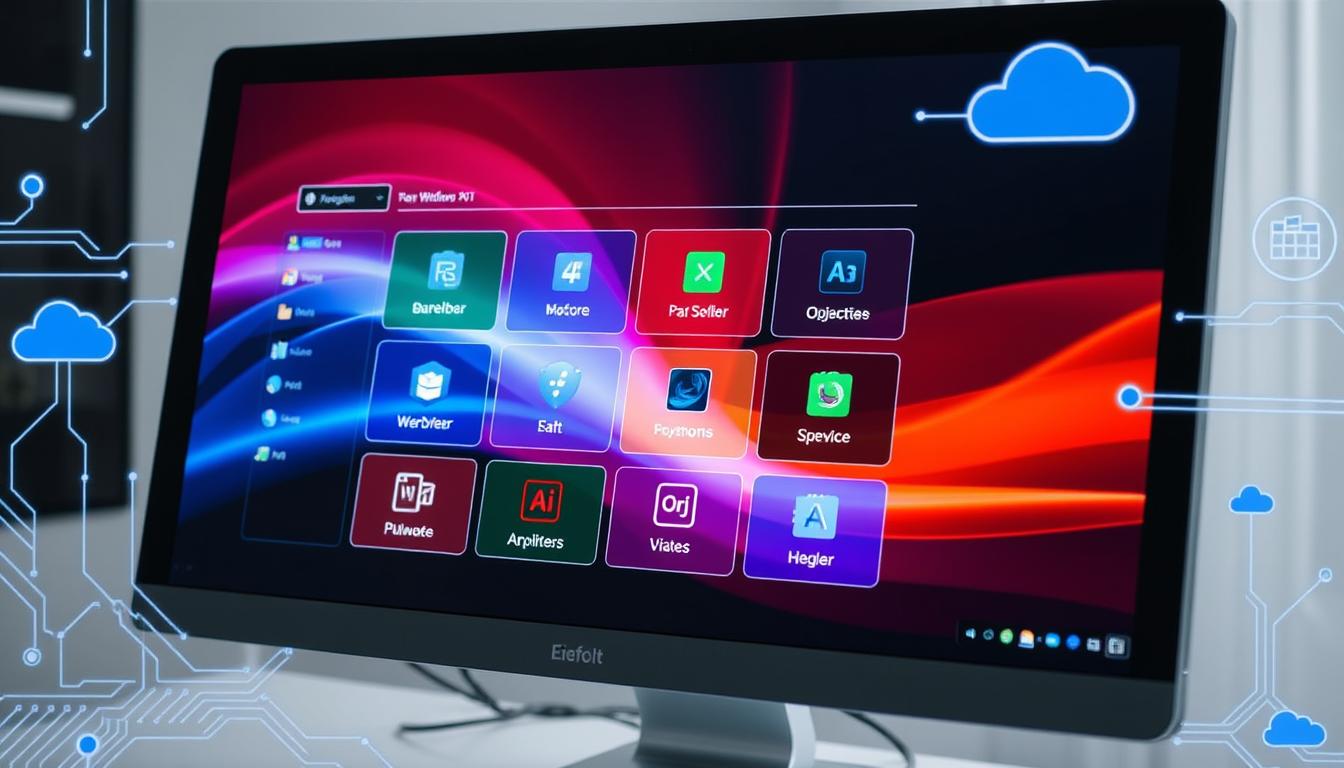
Leave a Reply